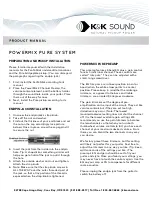
HNL020R(L), HNL050R(L) Red HeNe Laser System
Chapter 2: Description
Rev B, February 27, 2012
Page 10
The laser cavity can be designed with the correct mirrors and length to promote other wavelengths of laser
emission. There are infrared transitions at 3.39
μ
m and 1.15
μ
m wavelengths, and a variety of visible transitions,
including a green (543.365 nm, sometimes called GreeNe laser), a yellow (593.932 nm), a yellow-orange
(604.613 nm), and an orange (611.802 nm) transition. The typical red, 633 nm wavelength output of a HeNe laser
actually has a much lower gain compared to other wavelengths, such as the 1.15
μ
m and 3.39
μ
m lines.
Figure 4 HeNe Visible Laser Lines
2.1.5. HeNe
Polarization
Unpolarized (Randomly Polarized) Beam
The output of an unpolarized HeNe laser consists of a rapidly fluctuating, linearly polarized beam whose
polarization orientation changes on a nanosecond time scale. Unpolarized lasers are ideal for applications where
there are no polarizing elements in the beam path. Depending on the time scale of an application, large power
fluctuations are possible.
Linear Polarized Beam
The state of polarization in a polarized HeNe laser beam is linear, making these lasers ideal for polarization-
sensitive applications.
500
550
650
Wavelength (nm)
HeNe Visible Laser Lines
750
600
700











































